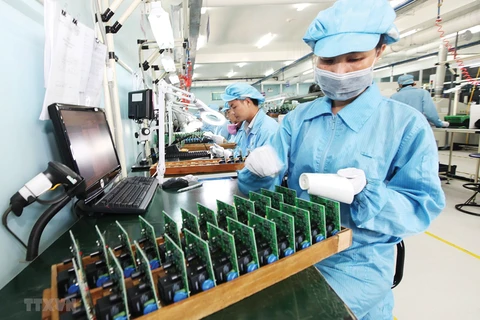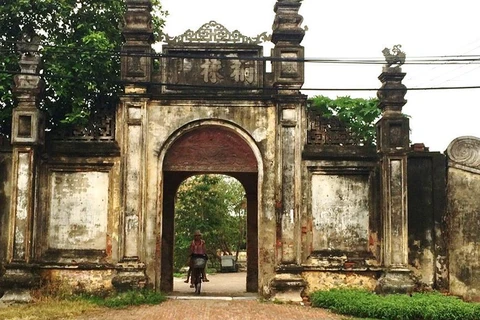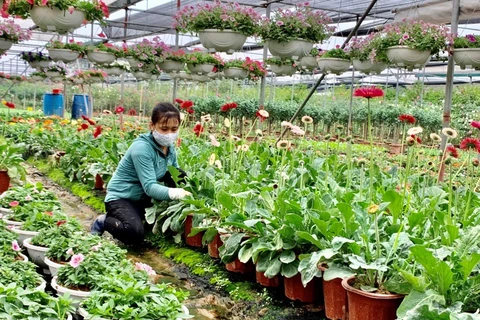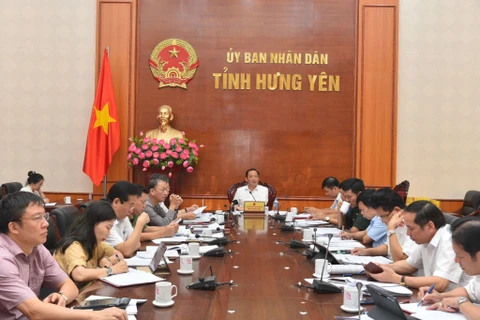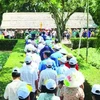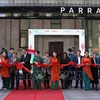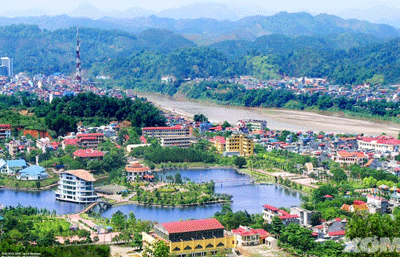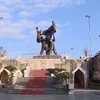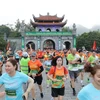Hanoi (VNA) - Over the recent years, many localities in the northern province of Hung Yen have been actively developing rural tourism with a focus on promoting trade-investment linked to harnessing the potential and advantages of local agriculture, craft villages, culture, and the ecological environment.
Through the ups and downs of time, the land and its people still keep intact communal and ancient houses as well as the customs and traditions deeply rooted in Vietnamese culture.
In Hung Yen, rural tourism primarily involves visiting craft villages and exploring historical and cultural relics, festivals, and more. Recently, some areas in the province have introduced models that combine farms with tourism, enabling visitors to sightsee and purchase farm produce. Notable examples include flower and ornamental tree villages in Xuan Quan, Phung Cong, Me So communes, Van Giang district; the Nam Nghia Trai medicinal herb village in Tan Quang commune, Van Lam district; and the Hong Nam longan cooperative in Hung Yen city, among other locations.
Tat Vien village in Thu Sy commune, Tien Lu district, is renowned for its traditional fish trap weaving craft that dates back over 200 years. Visitors not only learn about the process of making fish traps but also experience firsthand the art of weaving, creating their own products. They can also role-play as farmers, bringing their products to the fields to acquire skills in catching shrimp, crab, and fish.
Currently, many tourists favour the agro-tourism model thanks to its cost-effectiveness. For a weekend, Nguyen Le Hang from Luong Bang town, Kim Dong district, brought her children to visit and experience grape-picking at the Hong Nam Green Agriculture Investment and Development Cooperative in Bao Khe commune, Hung Yen city. She said this is not just a simple outing, but also a way for the kids to learn through practical experience, getting close to nature, and thus gaining a better understanding of the lives of farmers. “It teaches them to appreciate labour,” Hang said.
However, when looking at the overall picture of the sector in the province, it's only available in a few locations with standalone, locally-developed services. These services lack comprehensive linkage to form a quality service chain that meets tourists' needs, hence limited revenue.
Pham Van Hieu, Deputy Director of the provincial Department of Culture, Sports, and Tourism, noted that in its overall tourism development plan until 2025, with a vision to 2030, the province aims to create a system of high-quality, distinctive products with high value added, which caters to tourists' demands. The focus is on developing green products, particularly involving rural and community-based tourism, as well as eco-tourism.
To reach the goals, the province needs to prioritise resource allocation for organising tourist sites and areas, and harmonising infrastructure and improving facilities to serve the industry. It is necessary to construct exhibition centres and outlets to showcase and sell agricultural, traditional craft products, and souvenirs of high quality; pay attention to human resource training; and connect tour routes and attractions within the province.
Concurrently with exploitation, the province needs appropriate policies to conserve and promote cultural spaces and historical relics, and to support the preservation, restoration, and development of traditional craft villages. This can contribute to enhancing the living standards of residents and achieving a sustainable shift in the local rural economic structure./.


